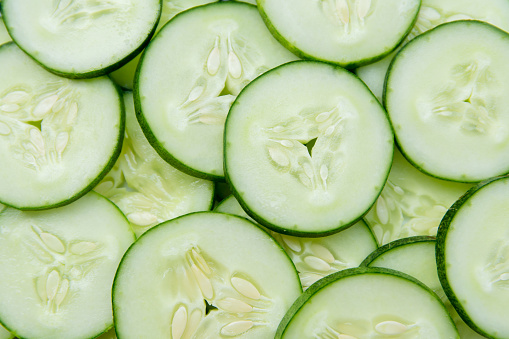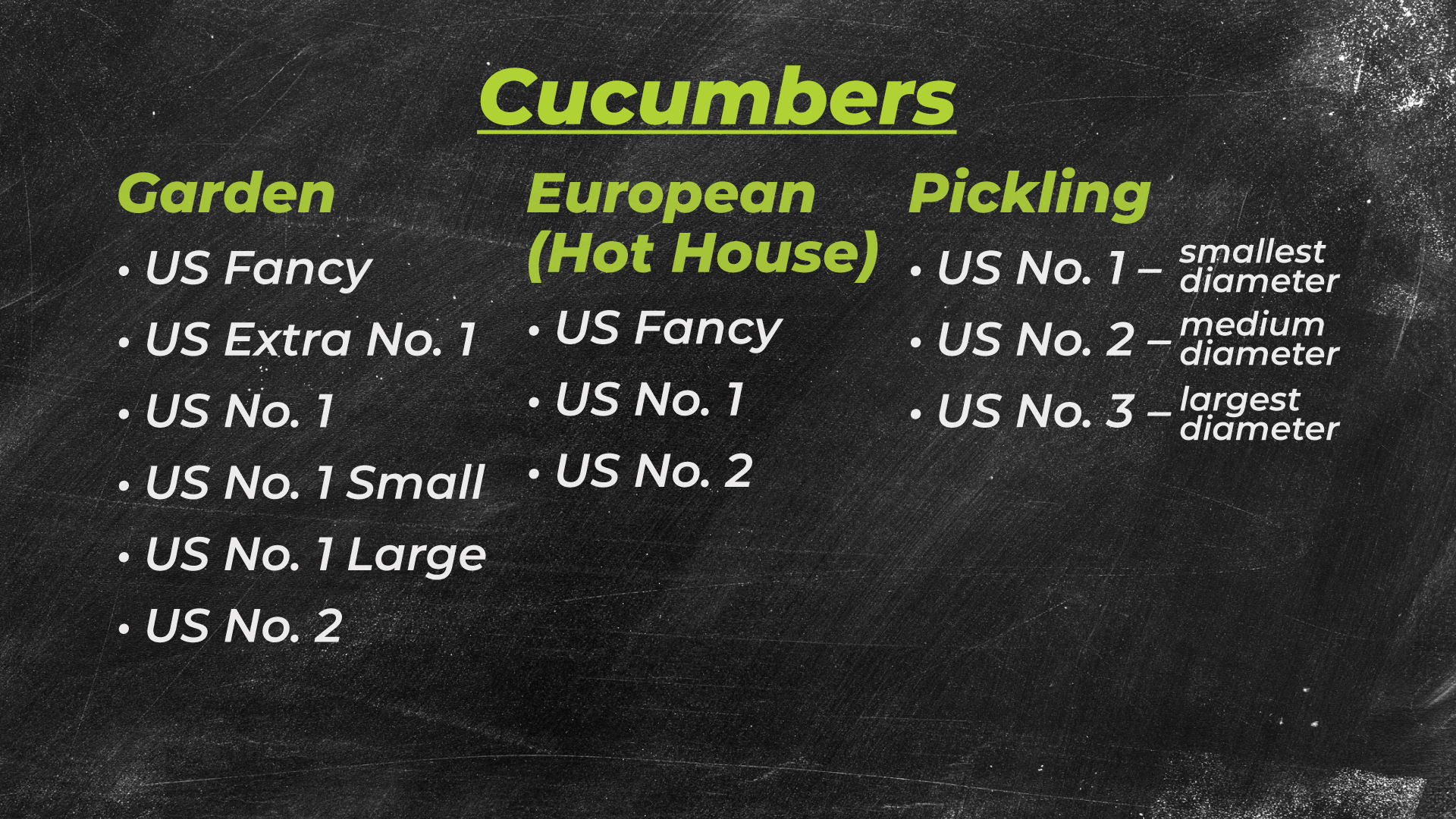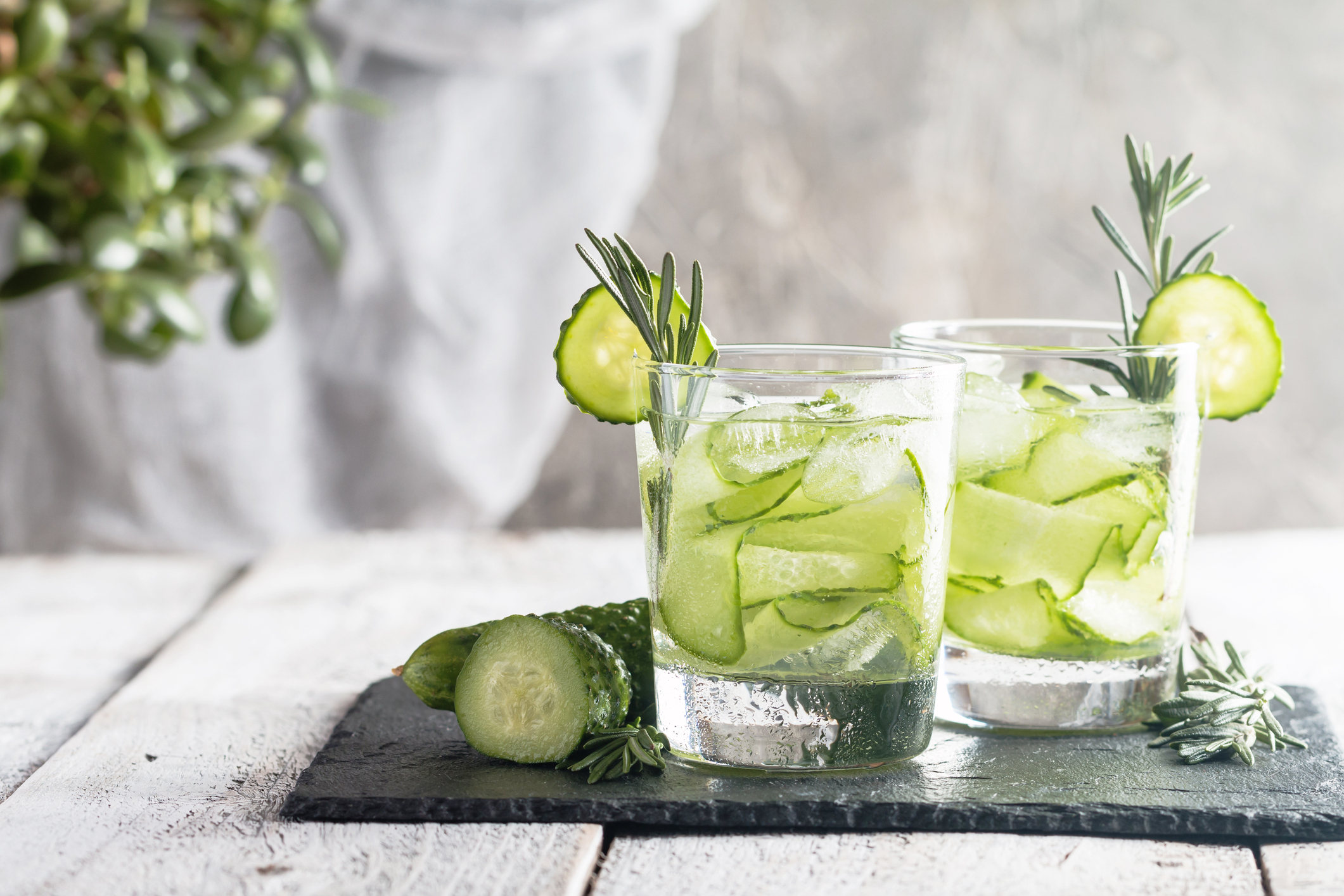
Produce 101: Cucumbers
Today we are going to talk about Produce 101: Cucumbers
Cucumbers are how old?
Cucumbers are one of the most ubiquitous items in the produce world, but did you know there are a few main types of cucumbers? Cucumbers originated in India and are believed to have been cultivated for over 3,000 years. Appreciated for their mild flavor and cooling effects, cucumbers are beginning to make a bit of a resurgence in some unlikely places, especially in the bar where their juice is currently all the rage for mixologists.
What are the types of cucumbers
There are three main types of cucumbers, and while all are similar in terms of handling, structure and flavor, they are used in different ways.
- Salad/garden (aka field grown)
Salad, or garden, cucumbers are the most common, and are typically used sliced or diced in raw applications. With the garden cucumber, the seeds are well-formed and—while certainly edible—they’re just not very palatable.
Cut them in half, scoop the seeds out, and go from there.
Also, the skin is thicker than the hothouse cucumber, and can sometimes be a bit bitter. They are also usually coated with an edible wax.
- European/Seedless/Hot House (aka burpless)
European or Hothouse cucumbers, are also known as seedless and even burpless cucumbers, and while not truly seedless, the seeds are less mature and more easily digested. In addition, the skin is thinner and the sizing is much more uniform. They are most commonly seen wrapped in plastic as they get dehydrated easily.
- Pickling (aka Kirby)
Pickling cucumbers are primarily used for what their name implies. The thicker skin and slightly denser flesh makes for a better finished pickle. While you can certainly use these as you would a garden cucumber, it will require a little more work to make them work.

Grades
Cucumbers do have USDA specs that are based mainly on external appearances, with sizing, color and uniformity being the major determinants, US Fancy being the highest grade for both garden and European varieties and US #1 being the highest grade for pickling cukes.

Consider using some of the lower grades if you’re processing them, as the quality will be the same, but the product will likely be a bit less expensive. There are some common industry terms such as Super Select, Select, Large, Small, etc…that are used, but carry no statutory backing.
Produce 101: Cucumbers — how to properly store cucumbers
Cucumbers are cold sensitive, don’t let them get below 45 degrees Fahrenheit or some surface pitting will manifest. Avoid storing near ethylene producing items, as cucumbers are extremely sensitive to ethylene exposure.
- The recommended storage temperatures of cucumbers is 40-50 degrees F
- The middle of your cooler (2) is the best place for them.

Go beyond salads
Cucumbers make a great juice, and with mixology being as hot as it is take some #2 cucumbers put them in your juicer, strain it, and you’ve got a great mixer to offer your customers at your bar.

Contact your Marketing Associate about adding cucumbers to your next order. If you are not a customer, find out how to become one today!
Content provided by Chef Daniel Snowden, the Director of Culinary Development for FreshPoint Central Florida. He has been in the produce industry years almost 20 years, and loves getting geeky about food. Follow FreshPoint Central Florida on Facebook and Instagram. Additional contributions by Lisa Pettineo.
Some tools you can use:
Visit freshpoint.com for our seasonal availability guides—and while you are there, check out the FreshPress, our latest market report. Place your orders online with ease at myfreshpoint.com. Did you know you can receive real-time reliable delivery alerts on the day of your delivery? Activate and subscribe at FreshPoint.com/mydelivery
Download our app and take your produce management on the go. Place orders, review flyers, watch videos…all in one spot!
Find out more details about our UBU program, and how we are shining a spotlight on food waste while making value and food safety a priority.
We buy local to strengthen regional economies, support family farms, preserve the local landscape, and to provide fresh-from-the-farm food to our customers. Local.freshpoint.com connects you to your local farmers like never before! Customize your search by zip, city, state, radius…even by crops and growing methods. Pop in your zip code and learn about our local farmers.
Socialize with us!
Did you know we are on YouTube? Head over to our page and check out our 75+ videos. Don’t forget to subscribe, and also be a part of our Bell Team—hit the little bell icon to get notifications when we upload new videos.
Follow FreshPoint, Inc. on Facebook, Twitter, Instagram, and LinkedIn…and follow The Produce Hunter on Instagram as she finds the best specialty produce at the Santa Monica Farmers Market.

